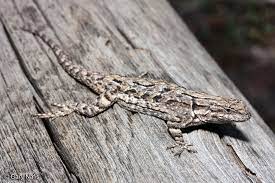Lizards come in a variety of colors and patterns depending on the species. Here is an overview of some of the most common lizard colors and what they can tell us about the reptiles.
Camouflage Colors

Many lizards have evolved camouflage coloration to help them blend into their environments and avoid predators. Some examples include:
- Greens and browns: Lizards like green anoles and brown basilisks are usually mottled shades of green or brown. This helps them blend in with foliage and tree bark.
- Tans and grays: Lizards living in desert or rocky environments, like horned lizards, are often light tan or gray to blend with the sand and rocks.
- Oranges and reds: Some tropical lizards like red-headed rock agamas have vivid orange and red scales. This helps them blend in with the leaves and flowers in their habitats.
Camouflage allows lizards to stay hidden from predators and remain undetected when hunting insects and smaller prey. The specific camouflage colors vary based on the lizard’s native environment.
Warning Colors
While some lizards rely on camouflage, others use bright, contrasting colors to stand out. These warning colors signal to potential predators that they are toxic or dangerous. Some examples include:
- Red, yellow, black: Coral snakes and their mimics, like scarlet kingsnakes, have bands of red, yellow, and black to signal their venomous nature. Predators learn to avoid these colors.
- Blue tails: Many lizards will drop their tails when threatened. Some blue-tailed skinks have especially bright blue tails that draw attention and allow the skink to escape unharmed.
- Dewlaps: Male anoles display large, colorful dewlaps on their necks to signal dominance and warn rivals away from their territories.
These warning colors help lizards advertise their defenses rather than relying on camouflage. This signals to predators to stay away and reduces the risk of attack.
Display Colors
Bright colors are also important for display and mating behaviors in many lizard species. Display colors help lizards attract mates and demonstrate fitness. Some examples include:
- Head coloration: Many male lizards develop bright blue, orange, or red coloration on their heads and faces during breeding season. They use these temporary colors to attract females.
- Throat fans: Male anoles and other species expand throat fans with vibrant patterns to court females and show dominance.
- Body stripes and spots: Lizards may develop bright stripes, spots, or patterns along their bodies and tails to signal reproductive status.
These display colors help lizards communicate and find mates during breeding season. The specific colors play an important role in species identification and courtship rituals.
Common Lizard Color Groups
While individual lizard species have diverse colors tailored to their needs, there are a few broad color patterns that emerge:
- Greens: Tree-dwelling lizards are often shades of green like emerald green tree skinks or green anoles. This provides foliage camouflage.
- Tans and browns: Many ground-dwelling lizards rely on tans and browns to blend with soil, rocks, and sand. Examples include horned lizards and ground geckos.
- Grays and blacks: Some lizards have darker gray or black scales that serve as camouflage at night and on volcanic soils. For example, the gray-banded kingsnake.
- Oranges, reds, and yellows: Tropical lizards in particular display vivid warm colors, like the red-headed rock agama. These colors stand out in the bright habitats.
- Blues: While less common, some lizards have shades of blue for display or warning purposes, like the tail of a blue-tailed skink.
So in summary, lizard colors span the rainbow but typically fall within certain camouflage or display color ranges tailored to their habitat and behaviors. Their diverse scales demonstrate how evolution shapes reptiles for survival.
Factors Influencing Lizard Color
A lizard’s color is more complex than simply inherited genes. There are several factors that influence the shades and patterns we see.
- Age: Young lizards often start with duller juvenile coloration then develop brighter adult scales as they mature.
- Time of year: Many lizards undergo color changes during breeding seasons to attract mates. Their dull non-breeding colors provide camouflage the rest of the year.
- Temperature: Some lizards can adjust their scales to darker or lighter colors in order to better regulate body heat.
- Diet: Pigments from foods can influence lizard coloration. Certain carotenoids create yellows, oranges and reds.
- Light exposure: Sun exposure brings out vivid colors while shade creates duller, darker scales.
- Location: As mentioned, local habitats drive evolution of camouflage colors. Even within a species, isolated populations may diverge in coloration.
-
Stress:
Times of stress or fear can rapidly change a lizard’s colors to show mood or status.
So a lizard’s specific color is the result of both genetic heritage and environmental influences during their lifetime. This helps them adapt and communicate through color variations.
Conclusion
In summary, lizard coloration serves many important purposes related to survival and communication. Camouflage colors help lizards hide from predators and hunt prey. Warning colors advertise toxicity and defense abilities. Display colors assist with mating rituals and territorial markers. exact colors span the color spectrum and vary between habitats and species. A mix of genetic and environmental factors influence the specific colors and patterns that emerge. So while we may ask “what color is a lizard?”, the answer encompasses an intriguing range driven by evolution and adaptation.
FAQs About What Color is a Lizard
Props like bolsters, blankets, and blocks offer physical support in Yin Yoga. They create elevation or cushioning, enabling practitioners to relax into deep stretches comfortably. This prevents strain, encourages longer holds, and allows the body’s natural release in connective tissues.
Can props help maintain alignment in Yin Yoga poses?
Yes, props play a crucial role in maintaining alignment in Yin Yoga poses. They assist practitioners in achieving proper form without overstretching. Props such as blocks, straps, and cushions help adjust poses to individual needs, ensuring safe alignment and enhancing the pose’s benefits.
Are there specific poses where props are recommended?
Indeed, certain poses in Yin Yoga benefit greatly from props. For example, using a bolster in “Supported Fish Pose” enhances chest opening, while placing blocks under hands in “Dragon Pose” eases strain. Props adapt poses for comfort, allowing practitioners to relax into stretches and maintain proper alignment.
How can props aid relaxation in Yin Yoga?
Props contribute to relaxation by promoting physical ease and comfort. They alleviate muscular tension, enabling the body to settle into poses more deeply. This physical relaxation translates into mental calmness, facilitating a meditative experience where practitioners can fully embrace the present moment.
Can props be used to adapt poses for different body types?
Yes, props are versatile tools for adapting poses to diverse body types. They accommodate variations in flexibility, body proportions, and limitations. By using props creatively, poses can be modified to suit individuals, making Yin Yoga inclusive and accessible to practitioners of all body types and levels.



